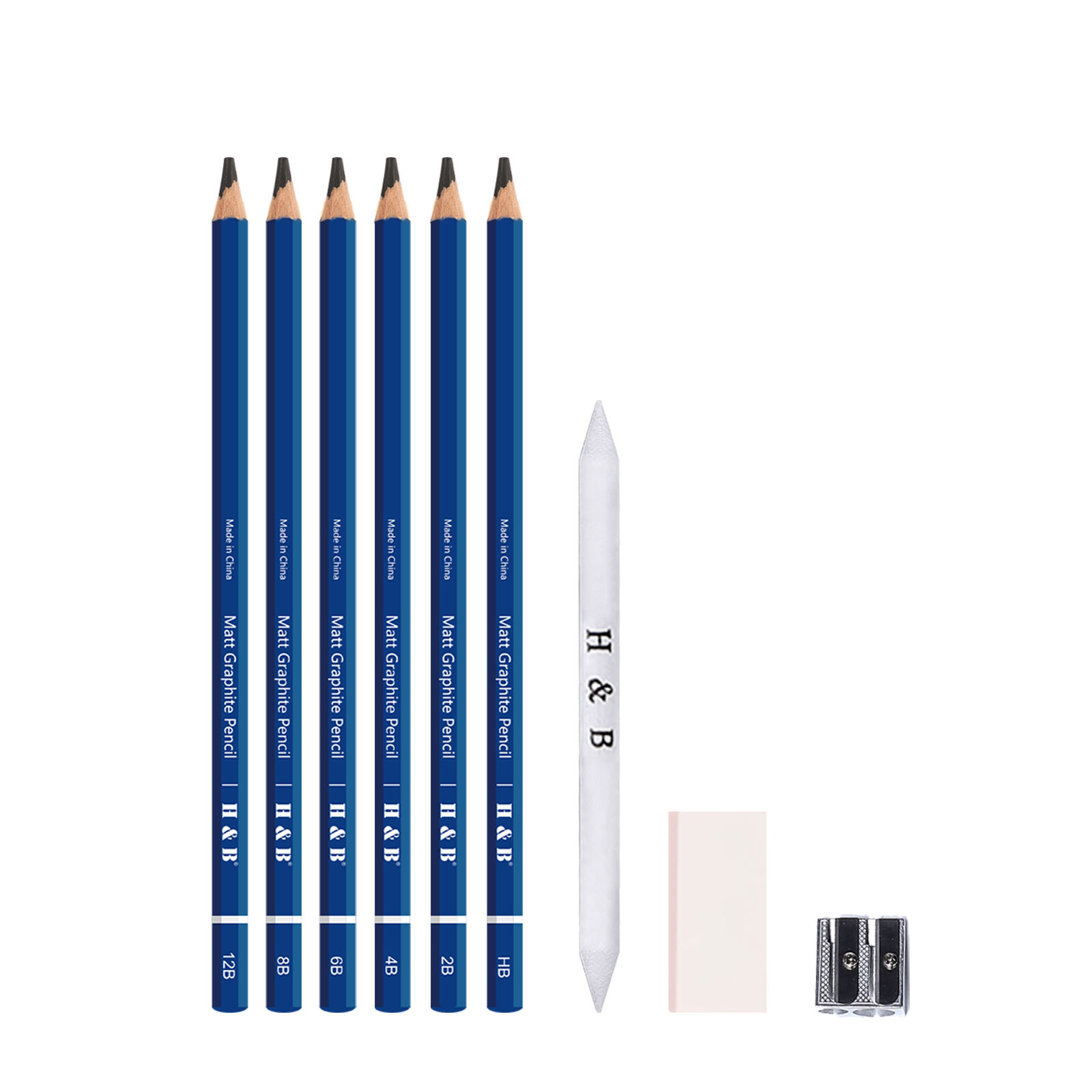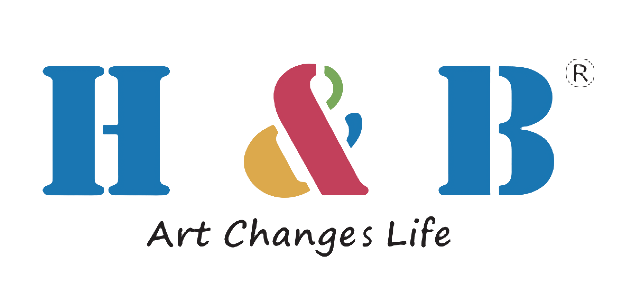Watercolor pencils offer artists a unique combination of precision and fluidity, bridging the gap between traditional colored pencils and watercolor paints. These versatile tools allow for both dry and wet application techniques, making them ideal for creating smooth, seamless blends that rival traditional watercolor paintings. Understanding the proper blending techniques can transform your artwork from basic sketches into professional-quality illustrations with stunning gradations and atmospheric effects.
Understanding Watercolor Pencil Properties
Core Composition and Water Reactivity
Watercolor pencils contain water-soluble pigments bound with gum arabic and other binding agents that dissolve when exposed to moisture. This unique composition allows the pigment to maintain its intensity while becoming fluid enough to blend seamlessly. The quality of the binding agents directly affects how smoothly the pencils blend, with higher-quality pencils typically offering more consistent dissolution and color flow.
The concentration of pigment within the pencil core determines both the opacity and blending characteristics of each color. Dense pigmentation creates vibrant washes when activated with water, while lighter concentrations produce subtle, transparent effects perfect for glazing techniques. Understanding these properties helps artists select the appropriate pencil pressure and water application for desired blending results.
Paper Selection Impact on Blending
The choice of paper significantly influences how effectively watercolor pencils blend and flow. Watercolor paper with moderate tooth provides the ideal surface texture for both dry application and wet blending techniques. The paper's absorbency rate affects how quickly pigments spread and how long artists have to manipulate colors before they set.
Cold-pressed watercolor paper offers an excellent balance between texture and smoothness, allowing for controlled blending while maintaining enough grip to hold pigment layers. Hot-pressed papers create smoother blends but may cause colors to spread unpredictably, while rough papers provide maximum texture but can make achieving seamless transitions more challenging.
Fundamental Blending Techniques
Wet-on-Dry Application Methods
The wet-on-dry technique involves applying watercolor pencils to dry paper and then activating the pigments with water. This method provides maximum control over color placement and blending intensity. Begin by laying down pencil strokes in the desired pattern, varying pressure to create different pigment concentrations that will respond differently to water activation.
When applying water to activate the pigments, use a clean, damp brush with minimal water content initially. Gradually increase moisture as needed to achieve the desired fluidity and blending effect. This controlled approach prevents over-saturation and allows for precise manipulation of color boundaries and gradient transitions.
Wet-on-Wet Blending Strategies
Wet-on-wet blending involves applying watercolor pencils to pre-moistened paper or adding pencil strokes to areas already activated with water. This technique creates soft, organic blends ideal for atmospheric effects, backgrounds, and natural color transitions. The key to successful wet-on-wet blending lies in timing and water control.
Prepare the paper surface with clean water, ensuring even moisture distribution without pooling. Apply pencil strokes while the paper maintains optimal dampness, allowing colors to flow naturally into one another. Monitor the paper's moisture level continuously, as the blending window closes as the surface dries, requiring quick decision-making and confident strokes.

Advanced Color Mixing and Layering
Layered Transparency Techniques
Creating smooth effects with watercolor pencils often involves building multiple transparent layers to achieve complex color relationships and depth. Each layer should be completely dry before applying subsequent colors to prevent unwanted mixing and maintain color clarity. This methodical approach allows for precise control over final color intensity and saturation levels.
Begin with light applications of base colors, activating them with minimal water to create thin, transparent washes. Allow each layer to dry completely before assessing whether additional layers are needed. This patient approach prevents over-working the paper surface and maintains the fresh, luminous quality characteristic of successful watercolor pencil work.
Color Temperature Balancing
Effective blending requires understanding how warm and cool colors interact when mixed with water. Warm colors tend to advance visually and may dominate blends, while cool colors recede and can become muddy if over-mixed with warm tones. Strategic placement of warm and cool colors creates natural-looking transitions and maintains color vibrancy throughout the blending process.
Use warm colors sparingly in shadow areas and cool colors judiciously in highlight regions to maintain realistic light and shadow relationships. When blending complementary colors, work quickly to prevent over-mixing, which can result in dull, muddy tones that detract from the overall vibrancy of the artwork.
Brush Selection and Water Control
Brush Types for Different Effects
The choice of brush significantly impacts the quality and character of watercolor pencil blends. Round brushes with good points excel at precise detail work and controlled blending in small areas, while flat brushes create smooth, even washes perfect for backgrounds and large color transitions. Natural hair brushes generally hold more water and provide better control than synthetic alternatives.
Size selection depends on the scale of the blending area and desired level of detail. Smaller brushes offer maximum precision but may create streaky effects in large areas, while larger brushes provide smooth coverage but lack fine detail capabilities. Having multiple brush sizes available allows for seamless transitions between detail work and broad washes within the same piece.
Water Management Strategies
Proper water control separates amateur from professional-looking watercolor pencil work. Too much water dilutes pigments excessively and causes uncontrollable spreading, while insufficient moisture fails to activate the binding agents properly. Develop a systematic approach to water application that ensures consistent results across different color combinations and paper conditions.
Maintain two water containers during work sessions: one for initial brush cleaning and another for clean water application. This prevents contamination from previous colors and ensures pure color mixing. Keep absorbent materials nearby to remove excess water from brushes and control moisture levels precisely throughout the blending process.
Troubleshooting Common Blending Issues
Preventing Color Mudiness
Muddy colors result from over-mixing complementary colors or using contaminated water and brushes. Prevent this issue by working with clean tools and limiting the number of colors mixed in any single area. When blending multiple colors, work in systematic layers rather than attempting to mix everything simultaneously.
If muddy colors do occur, allow the area to dry completely and then lift excess pigment using a clean, damp brush or paper towel. Sometimes adding a small amount of pure color can restore vibrancy to dulled areas. Prevention remains the best strategy, so maintain clean working conditions and plan color combinations carefully before beginning the blending process.
Managing Edge Control
Achieving clean, controlled edges while maintaining smooth blends requires careful attention to timing and water application. Hard edges can be softened by gently brushing along the boundary with a clean, damp brush while the pigment remains workable. Conversely, soft edges can be sharpened by allowing areas to dry and then adding precise pencil details.
Practice edge control techniques on scrap paper before working on finished pieces. Understanding how long you have to manipulate edges before they set permanently helps develop timing and confidence. Different paper types and environmental conditions affect working time, so adjust techniques accordingly based on current conditions.
Professional Tips and Best Practices
Workspace Organization
Maintaining an organized workspace enhances blending efficiency and reduces the likelihood of accidents that can compromise artwork quality. Arrange watercolor pencils in color order for quick selection, and keep water containers, brushes, and absorbent materials within easy reach. Good lighting prevents color perception errors that can lead to poor blending decisions.
Prepare all necessary materials before beginning the blending process, as working time is often limited once water activation begins. Having backup supplies readily available prevents interruptions that can affect the continuity of wet blending techniques. A well-organized workspace contributes significantly to the overall success of watercolor pencil projects.
Documentation and Learning
Keeping detailed records of successful color combinations and blending techniques accelerates skill development and ensures repeatability of desired effects. Note specific pencil brands, paper types, water application methods, and timing for future reference. Photography of work in progress helps identify which techniques produce the most satisfactory results.
Regular practice sessions focused specifically on blending techniques, separate from finished artwork creation, allow for experimentation without pressure. These practice sessions provide opportunities to test new color combinations and refine existing skills in a low-stakes environment, ultimately improving the quality of finished pieces.
FAQ
What is the optimal water-to-pigment ratio for smooth blending?
The optimal water-to-pigment ratio varies depending on the desired effect, but generally, start with minimal water and gradually increase as needed. For initial activation, use a barely damp brush to prevent over-dilution. The goal is to achieve enough moisture to activate the binding agents without washing away the pigment completely. Practice on test paper to determine the right balance for different color intensities and blending effects.
How long should I wait between layers when building transparent effects?
Allow each layer to dry completely before applying the next one, which typically takes 10-15 minutes depending on humidity and paper thickness. The paper should feel completely dry to the touch with no cool spots indicating residual moisture. Rushing this process can cause colors to mix unintentionally and create muddy results. Using a hair dryer on low heat can accelerate drying time if necessary.
Can watercolor pencils be blended with other mediums?
Yes, watercolor pencils can be successfully combined with traditional watercolors, colored pencils, and even pastels when used strategically. When mixing mediums, apply watercolor pencils first and activate them with water, then add other mediums once the surface is dry. Regular colored pencils can be applied over dried watercolor pencil areas to add fine details and enhance contrast. Always test combinations on scrap paper first to ensure compatibility.
What should I do if my blends appear streaky or uneven?
Streaky blends usually result from insufficient water or uneven application. While the area is still damp, gently brush over it with a clean, slightly damp brush using smooth, overlapping strokes. Work quickly before the pigment sets completely. If the area has already dried, you can reactivate it carefully with minimal water, but be cautious not to disturb underlying layers. Prevention is key: ensure even pencil application and adequate water activation from the start.


